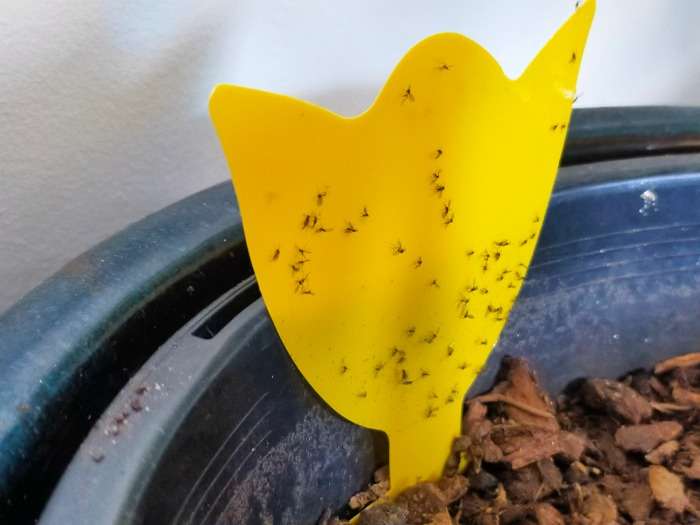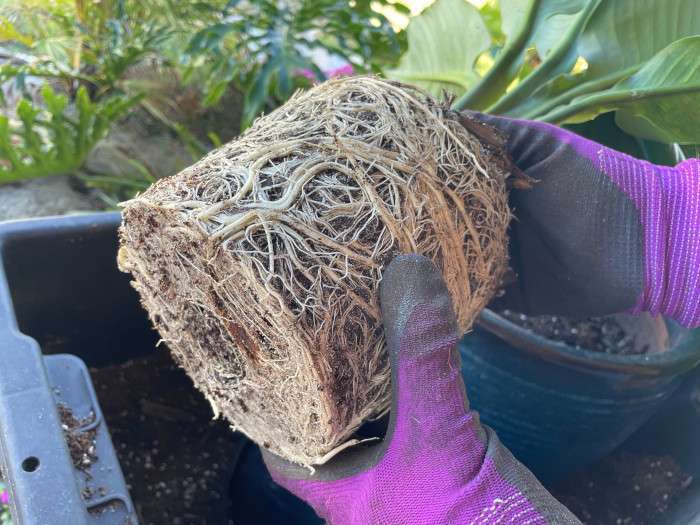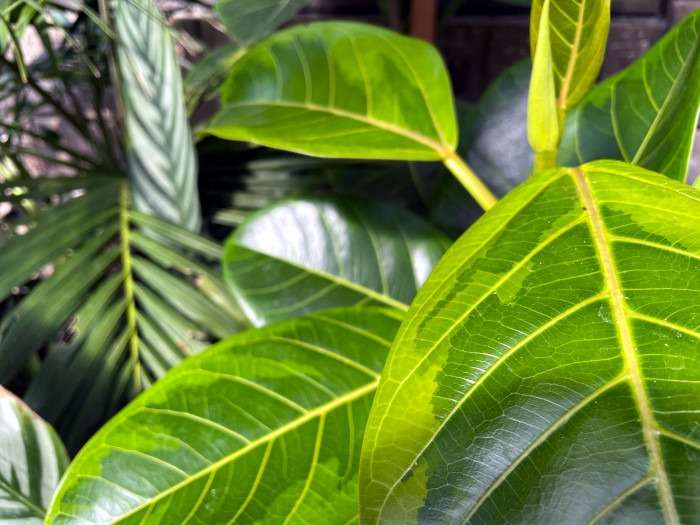Step into the leafy retreat of my wood room, which is now looking like a bit of a jungle, creating a cosy and inviting atmosphere. Today I want to talk about how I turned this space into a place for relaxation, reading, and music, with a focus on the plants that create the atmosphere.
The purpose of this room is to be a cosy retreat to read, or play music. To help create this feeling, I used large plants to tuck everything away and make the space feel more enclosed. In their natural environment they would all be fighting to reach the light of the canopy. To recreate this in the wood room I used close spacing to create a more natural jungle feeling.

In the middle of the room sits the piano, framed by bushy clusters of plants on either side. This creates a border which naturally draws your eye towards the piano as you step inside.
Tip: Consider the colour and texture of furnishings. Earthy tones and natural materials like wood and rattan can complement the greenery.

In a cosy corner of the room, there’s a comfy chair that makes a good spot to sit down with a book in the evenings. Surrounded by plants and soft lighting, it’s a nice spot to unwind.
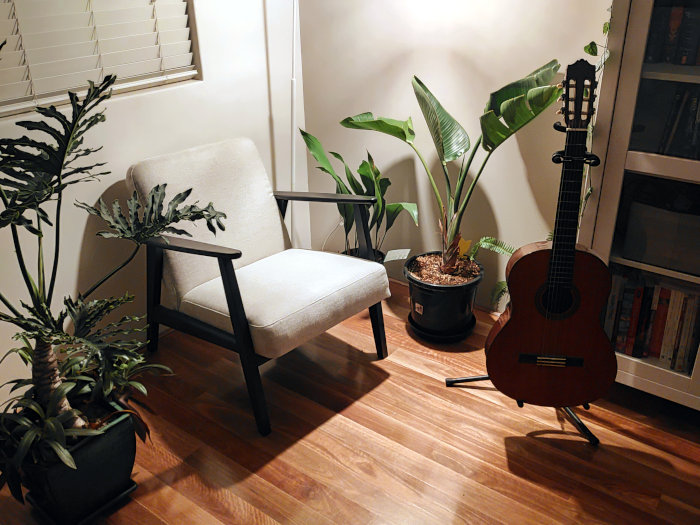
Tip: Soft, ambient lighting like string lights, floor lamps, or wall sconces can enhance the atmosphere.
Plant Selection and Placement
When it comes to arranging plants in your room, consider the following factors:
Light Considerations
- Large windows or glass doors will provide more light.
- The further the distance, the level of light dramatically falls off.
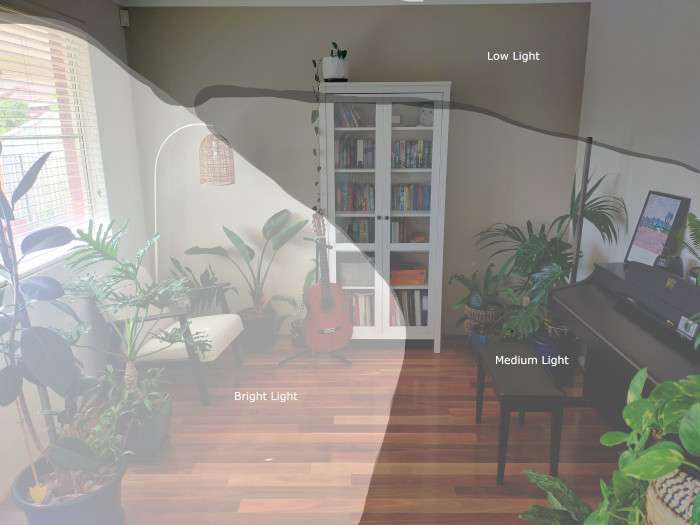
Create Height Variation
- Place taller plants at the back, medium-height plants in the middle, and shorter plants in front to create depth and visual interest.
- Experiment with placing taller plants in front of smaller ones to add a sense of mystery.
- Use plant stands and shelving to use more vertical space.
- Hang plants from a wall or ceiling.
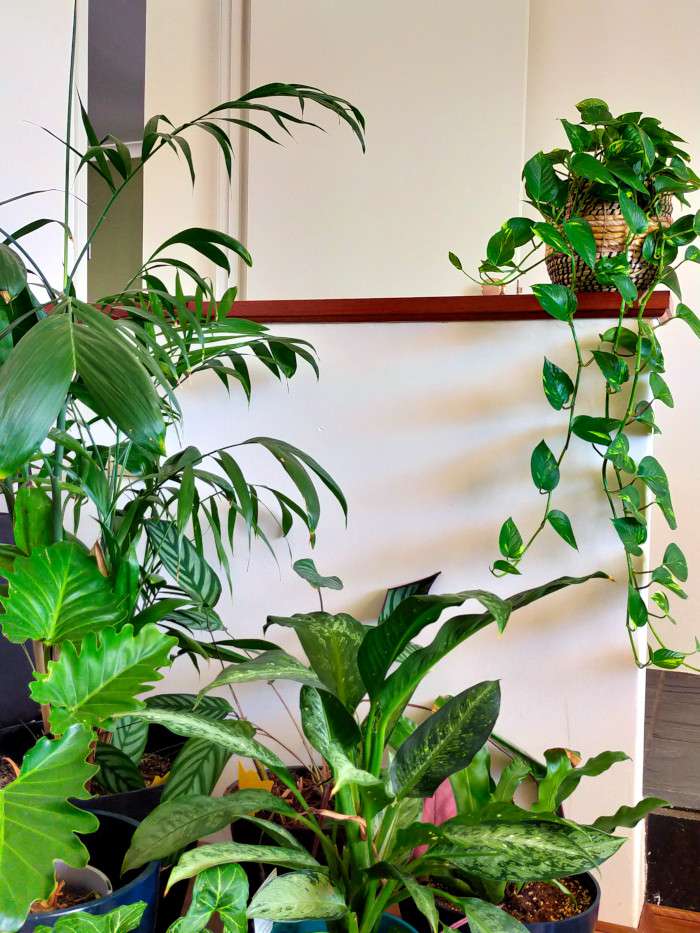
Grouping Rules
- Odd Number Arrangement: Arrange plants in odd numbers for visual appeal.
- Use Bushy or Multi-Stemmed Plants: Use plants with multiple stems or a bushy appearance to add fullness.
- Close Proximity with Space Between Pots: Keep plants close together to create cohesion but leave space between pots to prevent overcrowding.
- Complementary Colours and Textures: Choose plants with complementary colours and textures, experimenting with smooth, rough textures, and different shapes.
- Cohesion: When you mix plants and pots, try to keep them in a similar colour or material to avoid too much visual confusion.
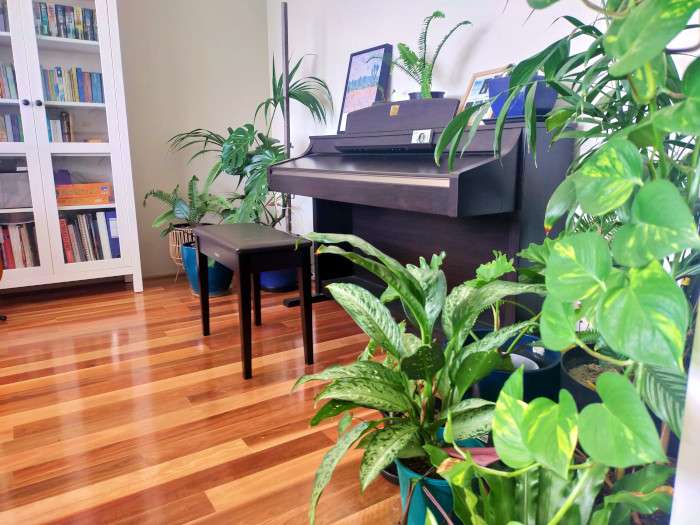
Purposeful Placement
When placing a plant, think about their intended purpose, which can fall into three categories:
Fillers
- Fillers are used to fill the space helping to achieve a more lush and full look.
- Consider using plants with a bushy growing habit.
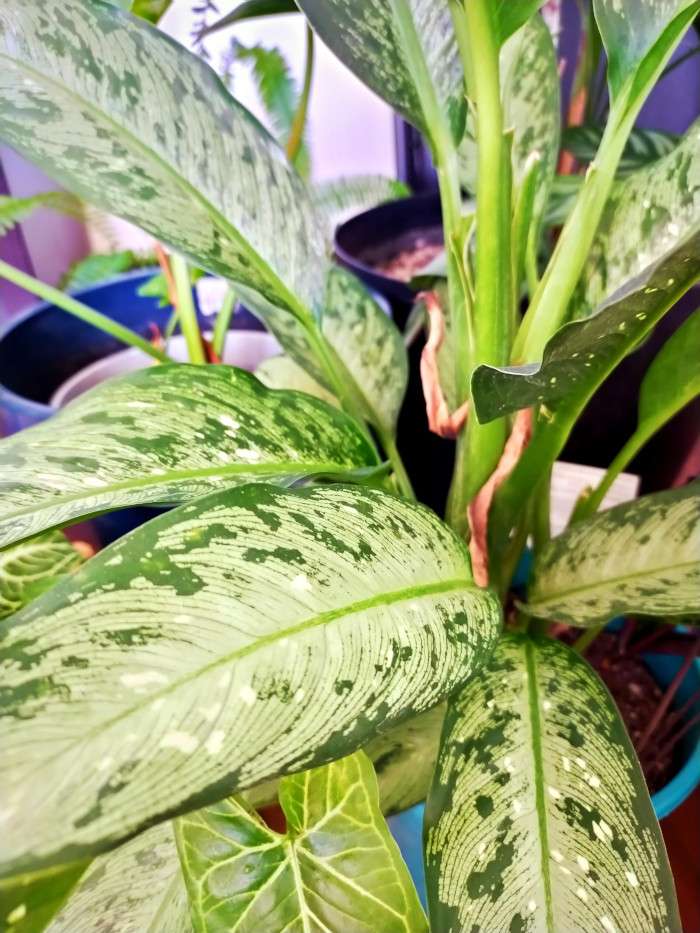
Spillers
- Spillers are generally plants with a trailing growth habit.
- They can be used to soften edges and blend the other elements together.
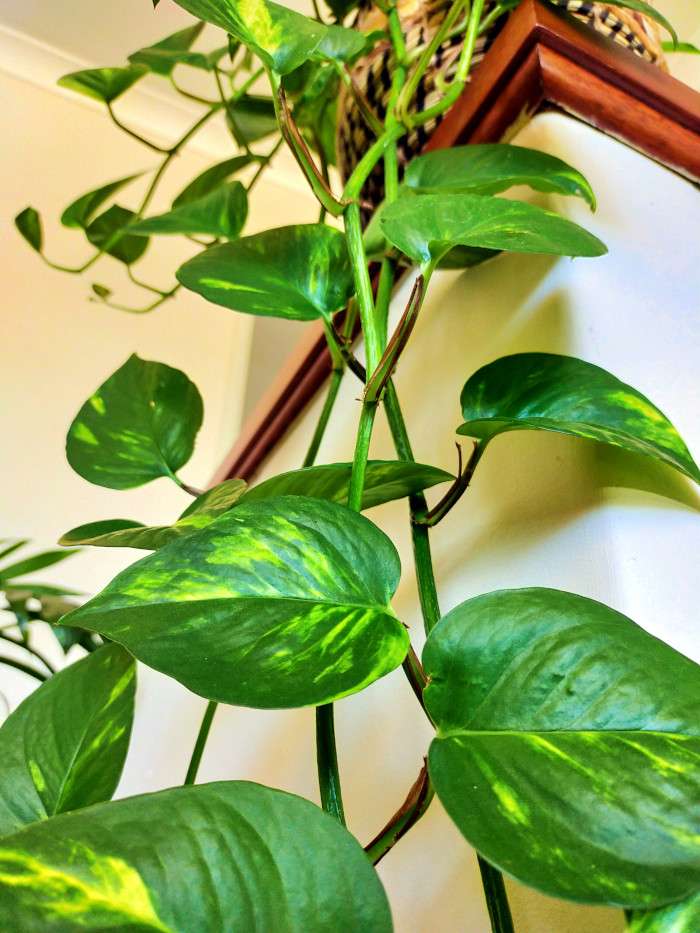
Thrillers
- Thrillers serve as focal points, drawing attention with vibrant colours, interesting shapes, textures or large size.
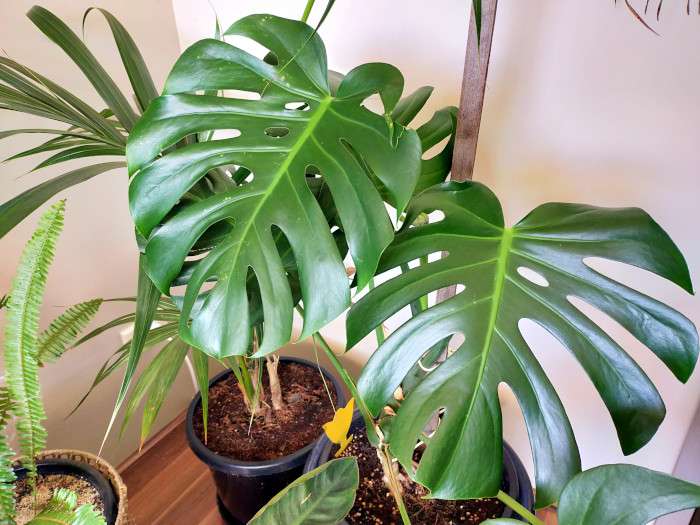
These are just general guidelines, feel free to move things around however you think looks good. I tend to move things around a lot before I’m happy with the final result.
Pots
Pots can affect both plant health and the room composition. Many of my pots are simple black plastic nursery ones, this is both an affordable option and helps to emphasize the plants themselves.
I use saucers under my containers for convenience, opting to water less to avoid drainage issues. This means I don’t need to haul plants to the sink when it comes to watering and helps reduce maintenance.
Key Takeaways:
- When selecting a pot, decide whether it or the plant will be the focal point.
- Choosing containers of different sizes, shapes, and textures to enhance visual appeal.
- Consider how you will manage drainage with the pot.
- Experiment with different combinations to see what works for you in your space.
Plant Showcase
Some of my favourite plants which help bring the jungle to this room. I value them for being low maintenance, their interesting foliage and their indoor adaptability.
Nephrolepis obliterata ‘Emerald Queen’
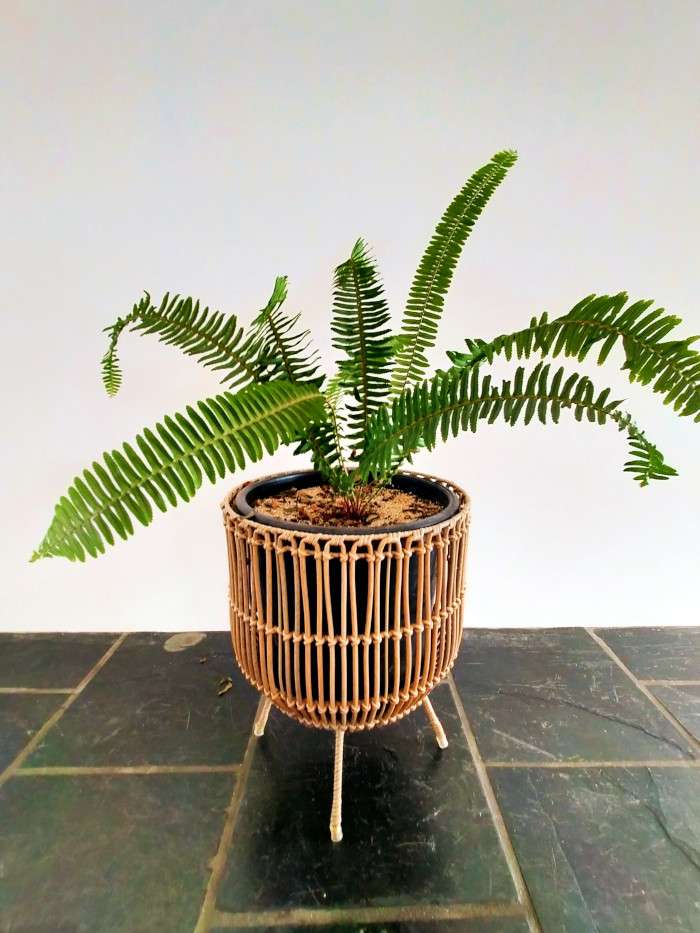
Ferns are some of my favourite plants due to their versatility. They can serve as fillers or spillers, adept at smoothing edges and blending things together with their lush foliage. They are also useful for filling in empty corners or darker spaces.
The Emerald Queen Fern, in particular, is quite hardy compared to other ferns I’ve encountered. It’s not as fussy and can tolerate a variety of conditions well. Additionally, it’s easy to propagate through its runners.
If you don’t have access to this particular variety, the Nephrolepis exaltata, also known as the Boston Fern, can be used as a substitute, offering a similar effect with its lush foliage and cascading fronds.
Tip: Because this plant is so hardy and thrives in humidity, it can make a great bathroom feature.
Strelitzia nicolai ‘Giant Bird of Paradise’

Perfect for indoors or outside, the Giant Bird of Paradise is a classic thriller plant along with the similar Strelitzia reginae or Bird of Paradise. The large, unique leaves and striking growing habit make for an excellent feature plant.
Its a plant that looks good by itself as well if you have limited room or just want a nice specimen plant. It will require an area with bright light if you want good sized leaves.
Tip: This plant normally grows in full direct sun, so give it the brightest spot you can.
Dieffenbachia seguine ‘Tropic Tiki’
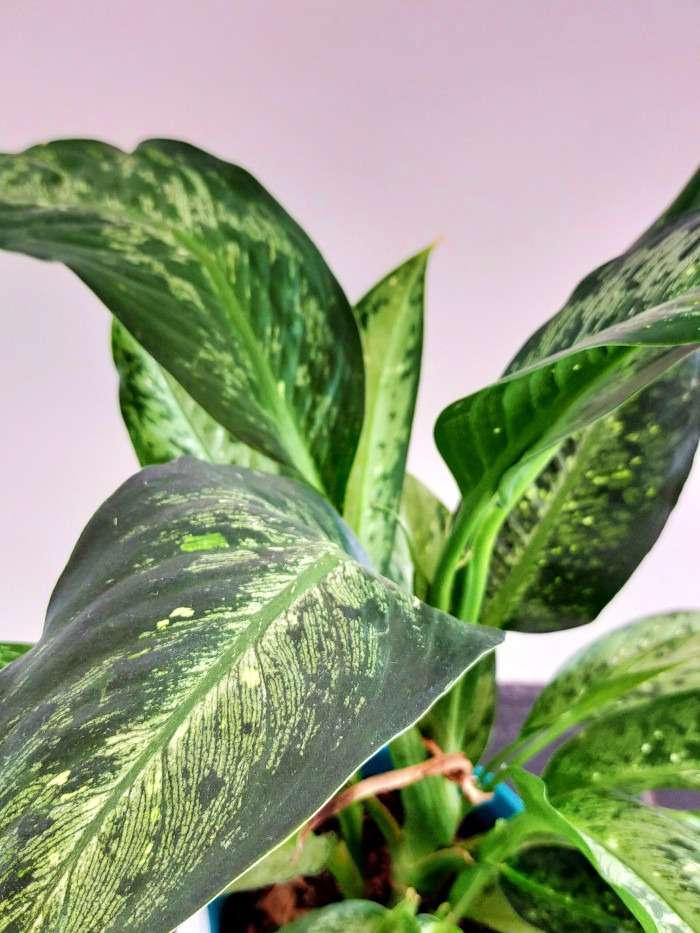
Dieffenbachia in general are low maintenance plants that also tolerate low light areas quite well. They tend to have thick, striking foliage and a bushy growth habit making for good filler or thriller specimens. I like the Tropic Tiki for its speckled markings and thin elegant leaves.
Tip: Dieffenbachia is poisonous, so keep it out of reach of pets and small children.
Conclusion
In transforming my wood room into a lush retreat, we’ve explored the power of plants in creating a cosy and inviting atmosphere. From thoughtful plant selection and placement to practical pot choices, every element contributes to the space’s unique ambiance.

